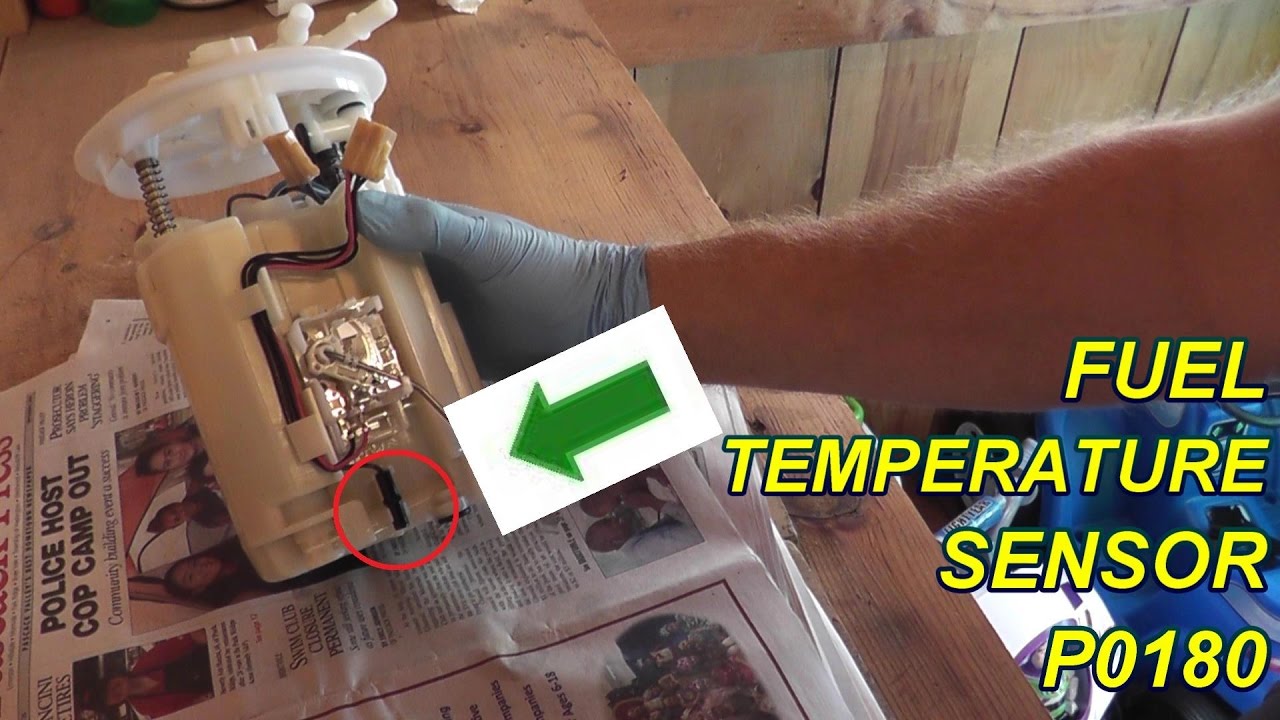P0181 OBD-II:燃油温度传感器 "A "电路范围/性能 OBD-II故障代码P0181是什么意思?
代码P0181代表燃油温度传感器A电路故障。
燃油箱温度传感器(FTS)用于确定燃油箱内的燃油温度,该信息被车载计算机发动机控制模块(ECM)用于帮助确定喷油器控制。
在大多数车辆上,ECM向FTS发送一个参考电压。 然后,FTS根据燃油温度改变其内部电阻,ECM读取修改后的电压信号。 FTS是一种称为热敏电阻的传感器。 其内部电阻随温度升高而减小。
See_also: P07A3 OBD II故障代码 来自 ECM 的 5 伏信号既是参考电压,也是返回输入。 当传感器温度升高时,其电阻降低。 这也降低了与 ECM 的参考连接上的电压。 ECM 将降低的电压理解为温度升高。
代码P0181表示ECM检测到燃油温度传感器'A'有问题。 代码的'A'部分表示问题出在两个传感器中的一个,如果车辆有一个以上的燃油温度传感器。
P0181症状
由专业人员进行诊断
查找您所在地区的商店
See_also: P2076 OBD II故障代码 P0181的常见原因
代码P0181通常由以下原因引起:
- 燃油箱温度传感器故障
- 接线问题
- 发动机控制模块有问题
如何诊断和维修P0181
进行初步检查
有时P0181会间歇性出现。 如果该代码是历史代码而不是当前代码,则情况尤其如此。 清除该代码并查看是否再次出现。 如果再次出现,下一步是进行目视检查。 训练有素的人员可以检查电线断裂和连接松动等问题。 如果发现问题,则应修复该问题并清除该代码。 如果未发现任何问题,则检查技术服务公告(TSB)。 TSB是由汽车制造商发布的建议诊断和维修程序。 查找相关的TSB可以大大减少诊断时间。
检查FTS
通常情况下,技术人员要做的下一件事是检查 FTS。 这可以通过使用数字万用表 (DMM) 测量传感器的内部电阻并将其与制造商的规格进行比较来实现。 传感器的电阻应随着温度的升高而降低。 例如,某车辆的维修信息规定电阻应在 2.3 至 2.7 欧姆之间。当温度为华氏68度时,应为0.79-0.90欧姆;当温度为华氏122度时,应为0.79-0.90欧姆。
检查电路
如果FTS检查无误,接下来应检查其电路。 可以使用DMM进行检查。 FTS有两根导线连接:信号线和回流线(接地)。
用 DMM 测量传感器信号线上的电压应为 5 伏左右。 要检查电路的回流侧,应将 DMM 切换到欧姆表设置。 应测量 FTS 回流线和地线之间的连续性。 如果发现电路的任一部分有问题,则需要跟踪原厂接线图,找出问题所在。维修并清除代码。
检查 ECM
在极少数情况下,ECM 可能存在故障。 ECM 应始终向 FTS 提供 5 伏参考电压。 如果不提供,则可能存在故障或需要重新编程。
与P0181相关的其他诊断代码
- P0180:代码P0180表示发动机控制模块(ECM)检测到燃油温度传感器'A'电路故障。
- P0182:代码P0182表示发动机控制模块(ECM)检测到来自燃油温度传感器'A'的低输入信号。 这通常表示短路。
- P0183:代码P0183表示发动机控制模块(ECM)检测到燃油温度传感器'A'的输入信号过高。 这通常表示电路开路。
- P0184:代码P0184表示发动机控制模块(ECM)检测到燃油温度传感器'A'电路存在间歇性问题。
- P0185:代码P0185表示发动机控制模块(ECM)检测到燃油温度传感器'B'电路故障。
- P0186:代码P0186表示发动机控制模块(ECM)检测到燃油温度传感器'B'电路范围/性能问题。
- P0187:代码P0187表示发动机控制模块(ECM)检测到燃油温度传感器'B'的输入信号低。 这通常表示短路。
- P0188:代码P0188表示发动机控制模块(ECM)从燃油温度传感器'B'检测到高输入信号。 这通常表示开路。
- P0189:代码P0189表示发动机控制模块(ECM)检测到燃油温度传感器'B'电路存在间歇性问题。
代码 P0181 技术细节
根据制造商的不同,代码P0181可以代表燃油箱温度传感器或燃油温度传感器。

Ronald Thomas
Jeremy Cruz is a highly experienced automotive enthusiast and a prolific writer in the field of auto repair and maintenance. With a passion for cars that dates back to his childhood days, Jeremy has devoted his career to sharing his knowledge and expertise with consumers who seek reliable and accurate information about keeping their vehicles running smoothly.As a trusted authority in the automotive industry, Jeremy has worked closely with leading manufacturers, mechanics, and industry experts to gather the most up-to-date and comprehensive knowledge in auto repair and maintenance. His expertise extends to a wide range of topics, including engine diagnostics, routine maintenance, troubleshooting, and performance enhancement.Throughout his writing career, Jeremy has consistently provided consumers with practical tips, step-by-step guides, and trusted advice on all aspects of auto repair and maintenance. His informative and engaging content allows readers to understand complex mechanical concepts easily and empowers them to take control of their vehicle's well-being.Beyond his writing skills, Jeremy's genuine love for automobiles and innate curiosity have driven him to constantly stay abreast of emerging trends, technological advancements, and industry developments. His dedication to informing and educating consumers has been recognized by loyal readers and professionalsalike.When Jeremy isn't immersed in automobiles, he can be found exploring scenic driving routes, attending car shows and industry events, or tinkering with his own collection of classic cars in his garage. His commitment to his craft is fueled by his desire to help consumers make informed decisions about their vehicles and ensure they have a smooth and enjoyable driving experience.As the proud author of the blog for the leading provider of auto repair and maintenance information to consumers, Jeremy Cruz continues to be a reliable source of knowledge and guidance for car enthusiasts and everyday drivers alike, making the road a safer and more accessible place for all.



